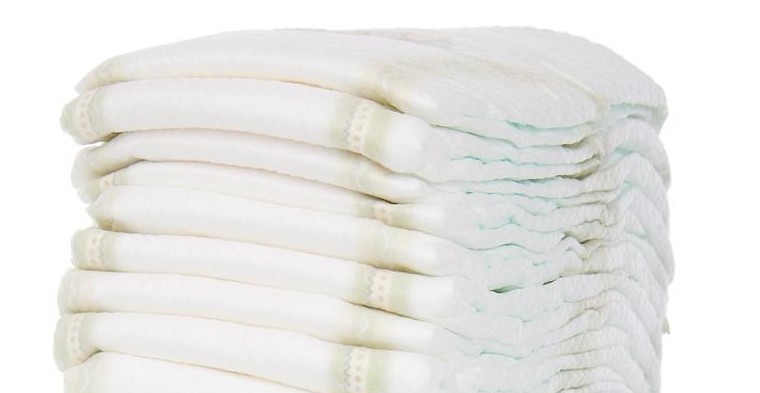How to Change a Diaper: Step-by-Step Guide to Diapering a Baby
Changing diapers is an essential skill for every new parent, but it can be a daunting task for those who have never done it before. With a little practice and patience, changing diapers can become a routine and straightforward task.
Why is Diaper Changing Important?
Diaper changing is crucial for the health and comfort of your baby. A soiled diaper can cause diaper rash, infections, and discomfort to the baby. Changing diapers frequently can help prevent these issues and keep your baby clean and happy.
What do you Need to Change a Diaper?
To change a diaper, you will need a clean diaper, wipes, diaper cream, and a changing pad. It is essential to have all these items within reach before you start changing your baby’s diaper. This will prevent you from leaving your baby unattended on the changing table.
Step-by-Step Guide to Diapering a Baby
Follow these simple steps to change a diaper:
- Prepare your changing area and lay your baby on the changing pad.
- Remove the soiled diaper and clean your baby’s bottom with wipes.
- Apply diaper cream if necessary.
- Place the clean diaper under your baby’s bottom, with the back of the diaper at their waistline.
- Bring the front of the diaper up between your baby’s legs, making sure it is snug but not too tight.
- Secure the diaper tabs on each side, making sure the diaper fits well.
- Dispose of the soiled diaper and wipes in the diaper pail.
Changing diapers may seem challenging at first, but with practice, it will become second nature. Remember to always keep one hand on your baby and never leave them unattended on the changing table.
Why Knowing How to Change a Diaper is Important
Changing a diaper may seem like a simple task, but it is an important skill that every parent or caregiver should know. Not only does it keep your baby clean and comfortable, but it also prevents diaper rash and other health issues.
Prevents Diaper Rash
Diaper rash is a common skin irritation that affects many babies. It is caused by prolonged exposure to wetness and bacteria in the diaper area. When a baby sits in a wet or dirty diaper for too long, it can cause redness, irritation, and even infection.
Knowing how to change a diaper and doing it frequently can help prevent diaper rash. By keeping your baby’s diaper area clean and dry, you reduce the risk of irritation and infection. It is recommended to change a diaper every two to three hours, or as soon as it becomes wet or soiled.
Keeps Baby Clean and Comfortable
Changing a diaper is not just about hygiene, it is also about keeping your baby comfortable. A wet or dirty diaper can cause discomfort and even lead to crying and fussiness. By changing your baby’s diaper regularly, you can ensure that they are clean and comfortable.
It is important to use the right size and type of diaper for your baby to prevent leaks and discomfort. Disposable diapers are convenient and easy to use, but they can be expensive and harmful to the environment. Cloth diapers are a more cost-effective and eco-friendly option, but they require more effort to wash and maintain.
Conclusion
Knowing how to change a diaper is an important skill that can benefit both you and your baby. By preventing diaper rash and keeping your baby clean and comfortable, you can ensure that they are happy and healthy. Remember to change your baby’s diaper frequently and use the right type of diaper for their needs.

Gathering Supplies
Before you begin changing your baby’s diaper, it’s important to have all the necessary supplies within reach. This will make the process smoother and more efficient, as well as ensure that you have everything you need to keep your baby clean and comfortable.
Diapers
The first and most obvious supply you’ll need is a clean diaper. Make sure you have a stack of diapers nearby, as you never know how many you’ll need during a diaper change. It’s also a good idea to have diapers in different sizes on hand, as your baby will grow quickly and may require larger diapers sooner than you expect.
Wipes
Another essential supply for diaper changes is wipes. These are used to clean your baby’s bottom and genital area, and should be gentle enough to avoid irritation. Look for wipes that are specifically designed for babies, as they tend to be more sensitive and prone to rashes than adults.
Diaper Cream
If your baby is prone to diaper rash, you may want to have diaper cream on hand as well. This cream can help soothe and protect your baby’s skin, preventing irritation and discomfort. Look for a cream that is free of harsh chemicals and fragrances, as these can further irritate your baby’s skin.
Changing Pad or Surface
Finally, you’ll need a clean and comfortable surface to change your baby on. This can be a changing pad, which is a portable and easy-to-clean surface that can be placed on any flat surface. Alternatively, you can use a soft towel or blanket to create a makeshift changing surface. Just be sure to choose a surface that is clean and free of any potential hazards, such as sharp objects or loose items that could be a choking hazard.
| Supply | Why it’s important |
|---|---|
| Diapers | Keep your baby clean and dry |
| Wipes | Clean your baby’s bottom and genital area |
| Diaper Cream | Prevent and soothe diaper rash |
| Changing Pad or Surface | Create a clean and comfortable surface for diaper changes |

Step-by-Step Guide to Diapering a Baby
As a new parent, changing your baby’s diaper can be a daunting task. But don’t worry, with a little practice, you’ll become a pro in no time. Follow these simple steps to change your baby’s diaper:
Step 1: Prepare the Baby
Before you begin, make sure you have all the necessary supplies within arm’s reach. You’ll need a clean diaper, wipes, diaper cream, and a changing pad. Lay your baby down on the changing pad and unfasten their onesie or pants. Be sure to keep one hand on your baby at all times to prevent them from rolling off the changing pad.
Step 2: Remove the Dirty Diaper
Using one hand, hold your baby’s ankles and lift their bottom off the changing pad. With the other hand, gently remove the dirty diaper and set it aside. If there is a lot of poop, use the front of the diaper to wipe away as much as you can before using wipes.
Step 3: Clean the Baby’s Bottom
Using wipes, gently clean your baby’s bottom, making sure to clean all the creases. If your baby has a rash, apply diaper cream to the affected area. Be sure to let the cream dry completely before putting on the new diaper.
Step 4: Put on the New Diaper
Slide a clean diaper under your baby’s bottom, making sure the back of the diaper is in line with their waist. Bring the front of the diaper up between your baby’s legs and fasten the tabs on each side. Make sure the diaper is snug but not too tight. If the diaper is too tight, it can cause discomfort and chafing.
Step 5: Dispose of the Dirty Diaper
Wrap the dirty diaper in the clean diaper and dispose of it in a diaper pail or trash can. Be sure to wash your hands thoroughly with soap and water.
| Supplies Needed: |
|---|
| – Clean diaper |
| – Wipes |
| – Diaper cream |
| – Changing pad |
Remember, diapering your baby will become easier with practice. Don’t be afraid to ask for help or advice from other parents or your pediatrician.
Tips for Easier Diaper Changes
Changing a diaper may seem like a daunting task, especially for first-time parents. However, with a few helpful tips, you can make it a smoother and easier experience for both you and your baby. Here are some tips to keep in mind:
Be Prepared
Before starting the diaper change, make sure you have all the necessary supplies within reach. This includes clean diapers, wipes, diaper cream, and a changing pad. Having everything ready beforehand will make the process go much smoother and faster, and reduce the risk of accidents.
Use Diaper Cream Preventatively
Diaper rash is a common problem for babies, but you can prevent it by using diaper cream preventatively. Apply a thin layer of diaper cream to your baby’s bottom before putting on a clean diaper. This will create a barrier between your baby’s skin and the wetness of the diaper, reducing the risk of irritation and rash.
Keep Baby Distracted
Babies can get fussy and restless during diaper changes, so it’s important to keep them distracted. You can do this by giving them a toy to play with, singing a song, or making funny faces. This will help keep them calm and make the diaper change go more smoothly.
Work Quickly
Babies don’t like to lay still for long, so it’s important to work quickly during diaper changes. Remove the dirty diaper, clean your baby’s bottom with wipes, apply diaper cream if necessary, and put on a clean diaper as fast as you can. This will reduce the chances of your baby getting upset or uncomfortable.
By following these tips, you can make diaper changes a much easier and smoother experience for both you and your baby. Remember to be prepared, use diaper cream preventatively, keep baby distracted, and work quickly.

Conclusion
Changing a diaper can be a daunting task for new parents, but with practice, it becomes easier. The most important thing is to ensure that your baby is clean, dry, and comfortable. Remember to always wash your hands before and after changing a diaper to prevent the spread of germs.
Tips for Successful Diaper Changing
- Have all the necessary supplies within arm’s reach.
- Use a changing pad or a clean towel to protect the surface.
- Securely fasten the diaper to prevent leaks.
- Always check the baby’s diaper frequently.
- Be gentle and patient with your baby.
Choosing the Right Diaper
There are many types of diapers available on the market, including cloth and disposable diapers. Consider your lifestyle, budget, and environmental concerns when choosing the right diaper for your baby.
Final Thoughts
Changing a diaper is a necessary part of parenting, but it doesn’t have to be stressful. With the right supplies, technique, and attitude, you can master diaper changing in no time. Remember to enjoy this special time with your baby and cherish every moment.
| Keywords: | changing a diaper, step-by-step guide, diapering a baby, new parents, clean, dry, comfortable, wash hands, necessary supplies, changing pad, secure, leaks, gentle, patient, cloth, disposable diapers, lifestyle, budget, environmental concerns, parenting, special time, cherish |
